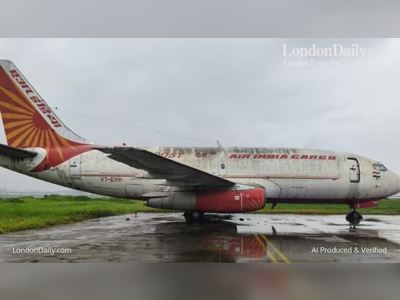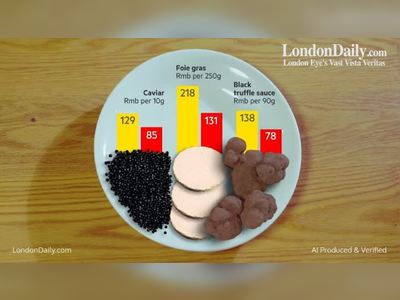
Coronavirus: One virus caused Covid-19. Scientists say thousands more are in waiting
Since the start of this century, two disease outbreaks have been caused by new coronaviruses that made the leap from animal hosts to people, mutating in the process to latch onto human cells. Covid-19 is the third.
Medical science is fighting back with the tools it has and building new defences, but the evidence suggests the three viruses behind these diseases are just the vanguard of an army of potential pathogens that may number in the thousands.
That such a large pool of viruses exists in so-called animal reservoirs is not a surprise to scientists and researchers who study them. But the concern is that evolving human behaviour, both social and economic, is increasingly bumping up against this army in animal habitats.
Experts say that is a result of massive deforestation and expansion of farmland to supply food and other commodities to a human population that has more than doubled to 7.7 billion from 3 billion in the 1960s.
The friction caused is among the factors allowing infectious diseases to emerge at a faster pace in human populations, according to the World Health Organisation (WHO), including the 21st century’s three major coronavirus killers so far: Sars-CoV, Mers-CoV and Sars-CoV-2.
Although most of these new pathogens come from animals, according to the WHO, the disease epidemics that follow are the result of a complex web of human infrastructure and globe-spanning transport networks. These are what quickly sweep a virus far beyond the forest, farm or community where it first jumped from animal to person, experts say.
“These spillovers have always happened – that’s just part of nature – but it’s our activities that are changing things,” veterinary epidemiologist Dirk Pfeiffer said. “We are creating an imbalance, we are getting closer to the forest and encroaching on the habitat of wild animals and pathogens that we didn’t know about before.”
This is compounded by growth of megacities along with mass development of global trade and travel, which allow infections to spread quickly, said Pfeiffer, who is a professor at City University of Hong Kong.
“Humans have shaped the planet so they can make more money and live comfortably, and in doing so they have provided the best environment possible for the transmission of pathogens,” he said.
As populations boom, growing economies and global supply chains offer consumers wandering supermarkets the choice of cuts of beef from cattle farms carved out of jungle or savannah on several different continents.
Step into another store to buy a mobile phone and it contains components made of cobalt dug from an African mine. Pick up some shampoo in New York and it contains palm oil from a plantation that replaced an animal habitat in Indonesia.
Providing all these commodities usually means clearing vast areas of forests, which brings people and livestock into increased contact with wildlife and the viruses they may carry. That creates the conditions for what disease ecologist Peter Daszak calls a new “pandemic era”.
“We need to be thinking about pandemics in the same way we think about climate change – it’s an existential threat to us, but it’s one we can actually control, because we’re the drivers of it,” said Daszak, who is president of the New York City-based research non-profit EcoHealth Alliance and has advised the WHO on infectious diseases.
Even before the Covid-19 pandemic, the WHO had already called the 21st century “a long history of scourges”, pointing to the re-emergence of the plague, which killed 200 people in Madagascar in 2017, and the outbreak of new viral diseases such as severe acute respiratory syndrome (Sars).
A team of epidemiologists including Daszak as well as George Gao, the director of the Chinese Centre for Disease Control and Prevention, and Dennis Carroll, the former director of the US Agency for International Development’s pandemic influenza and emerging threats unit, used mathematical models to estimate that there may be as many as 1.7 million unknown viruses in animals.
The same model estimated that over half a million could have the potential to cause human disease.
Daszak recently started fundraising for a US$1 billion project to find and catalogue these viruses. The goal is to build on work done by the United States Agency for International Development to create a database of genetic data to better equip a public health response to such pathogens.
But that is just one of the strategies for how humankind can better prepare to combat this viral army waiting in the wings.
Experts say more investment is needed in public health services and to develop improved means to monitor unexplained fevers and pneumonia in populations. That could include use of big data to assemble medical records, mobile phone data and flight patterns to predict how outbreaks will spread in order to intercept them.
Then there is China’s crackdown on trade in animals after the new coronavirus, Sars-CoV-2, was linked to a wet market selling wild animals as food in the city of Wuhan. The multibillion-dollar global wildlife trade also creates conditions for disease outbreaks.
Another development is the One Health initiative that brings together doctors and veterinarians in recognition of the links between humans, animals and the environment in epidemics. The initiative now includes hundreds of professionals after it gained traction in the mid-2000s amid the bird flu epidemic.
There is also rope covered in strawberry jam.
That was a trick used by a team of researchers working in the Bwindi Impenetrable Forest region in Uganda that included epidemiologist and wildlife veterinarian Tierra Smiley Evans, who used that rope to get baboons to give up their saliva samples easily. They loved it.
“They’d chew it like a piece of bubblegum, really work on it, and then they’d spit it out,” said Smiley Evans, a researcher at the University of California, Davis One Health Institute in the School of Veterinary Medicine.
“They’d chew it like a piece of bubblegum, really work on it, and then they’d spit it out,” said Smiley Evans, a researcher at the University of California, Davis One Health Institute in the School of Veterinary Medicine.
Saliva from the spat-out rope and jam provided Smiley Evans and her team with samples to test for viruses, known or unknown, by analysing genetic similarities to known viral families.
That information can help researchers understand what viruses are lurking in specific animal populations, and the risk for humans who are living, hunting or raising livestock near these animals. The idea is not to force communities to change or abandon their lifestyle, which can be impractical or ineffective, she said.
“But we can get a lot smarter in how we monitor these high-risk places and how we make sure that, if there is a spillover event, we have invested in the training of those communities so that they can recognise it … and let the world know.”
Understanding the viruses in animals is just one battle strategy, experts stress. Knowing which viruses are actually jumping to humans and making them sick – by widely testing samples for antibodies or viral families – is a crucial early line of defence to prevent these viruses from going pandemic.
“It very well could be the case that diseases similar to Covid-19 have been spilling over into humans for years, and because we don’t have very much in the way of the surveillance in our populations we didn’t catch it,” said Sam Scarpino, an assistant professor in the Network Science Institute at Northeastern University. “So I would put that at the top of the list.”
Scarpino runs a lab on emerging epidemics that works with public health agencies to build models to predict outbreaks and their spread.
But pinpointing when a potentially pandemic pathogen will spill over from animals to humans is impossible, Scarpino said. Even identifying the greatest risk areas for known diseases is “incredibly challenging”, he said. Part of that is because of bias.
“We’ve myopically focused on parts of China and Southeast Asia with respect to disease emergence and we are missing whole parts of the world that have the same environmental signatures and risk factors,” Scarpino said.
As an example, he pointed to the spread of novel influenza from livestock to individuals in the central US “almost every summer”.
In other cases the virus just does the unexpected. Heat maps built from data on bird populations to predict avian flu completely missed the central Mexican swine-farming region where the 2009 H1N1 flu outbreak is thought to have emerged in pigs, another carrier.
In an ideal scenario, Scarpino and his team would be able to draw from information gathered from disease surveillance around the world and use data on risk factors such as environmentally disturbed areas, heavy agricultural areas and wildlife trade. But they do not have all that data.
In the future fight against outbreaks, gathering that information in one place would be “a huge step forward”, Scarpino said.
“After this, I think there will be so much trauma that the world has experienced that we will be forever changed. I hope that one of those changes is sustained investment in surveillance.”
For veterinary epidemiologist Pfeiffer, building all means to prepare for and fight these epidemics is essential.
“The risk is absolutely growing … it could happen in 20 years or next year,” he said. “So far we can deal with them, they don’t kill enough of us. The next one could be the one that does.”










